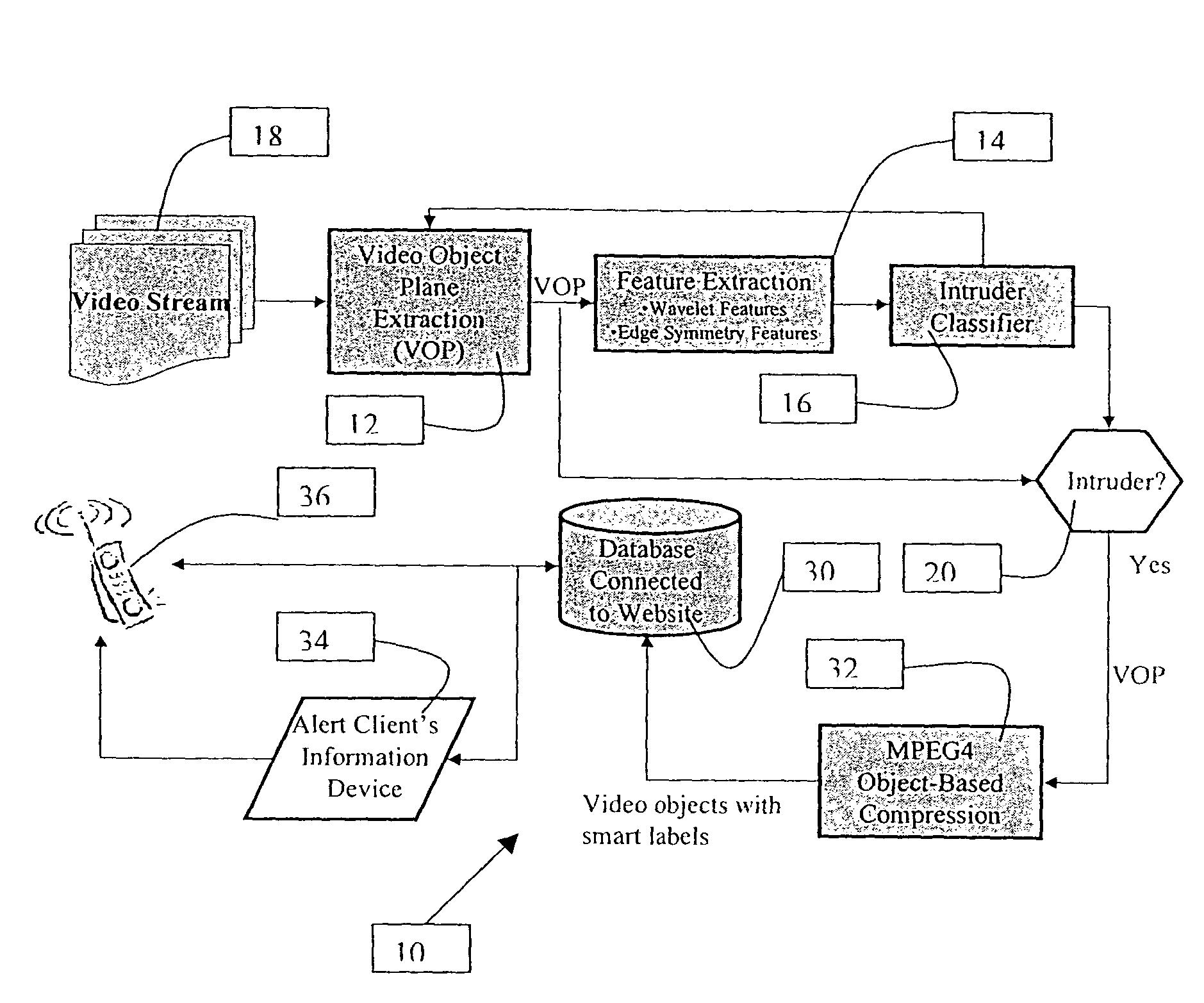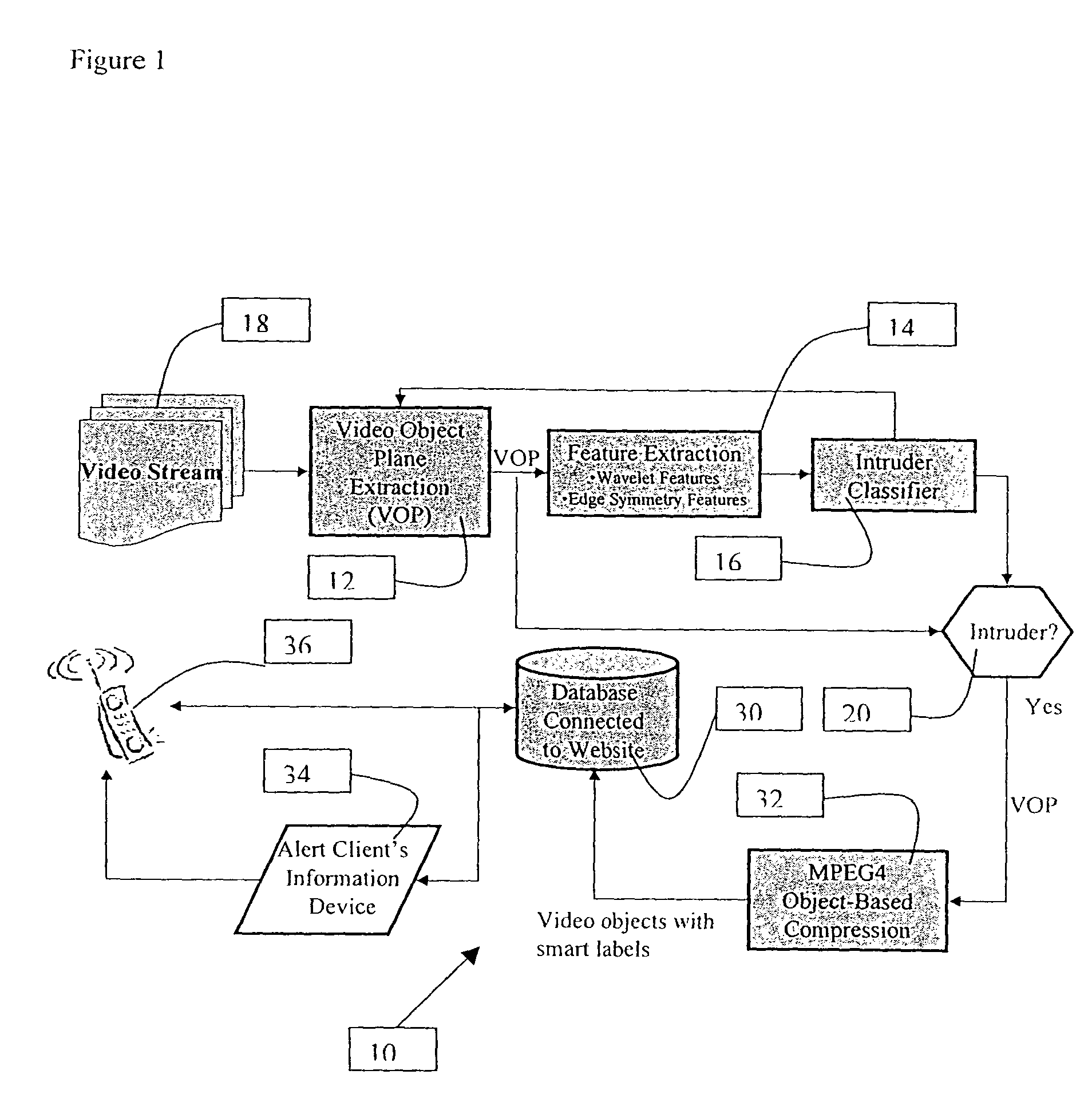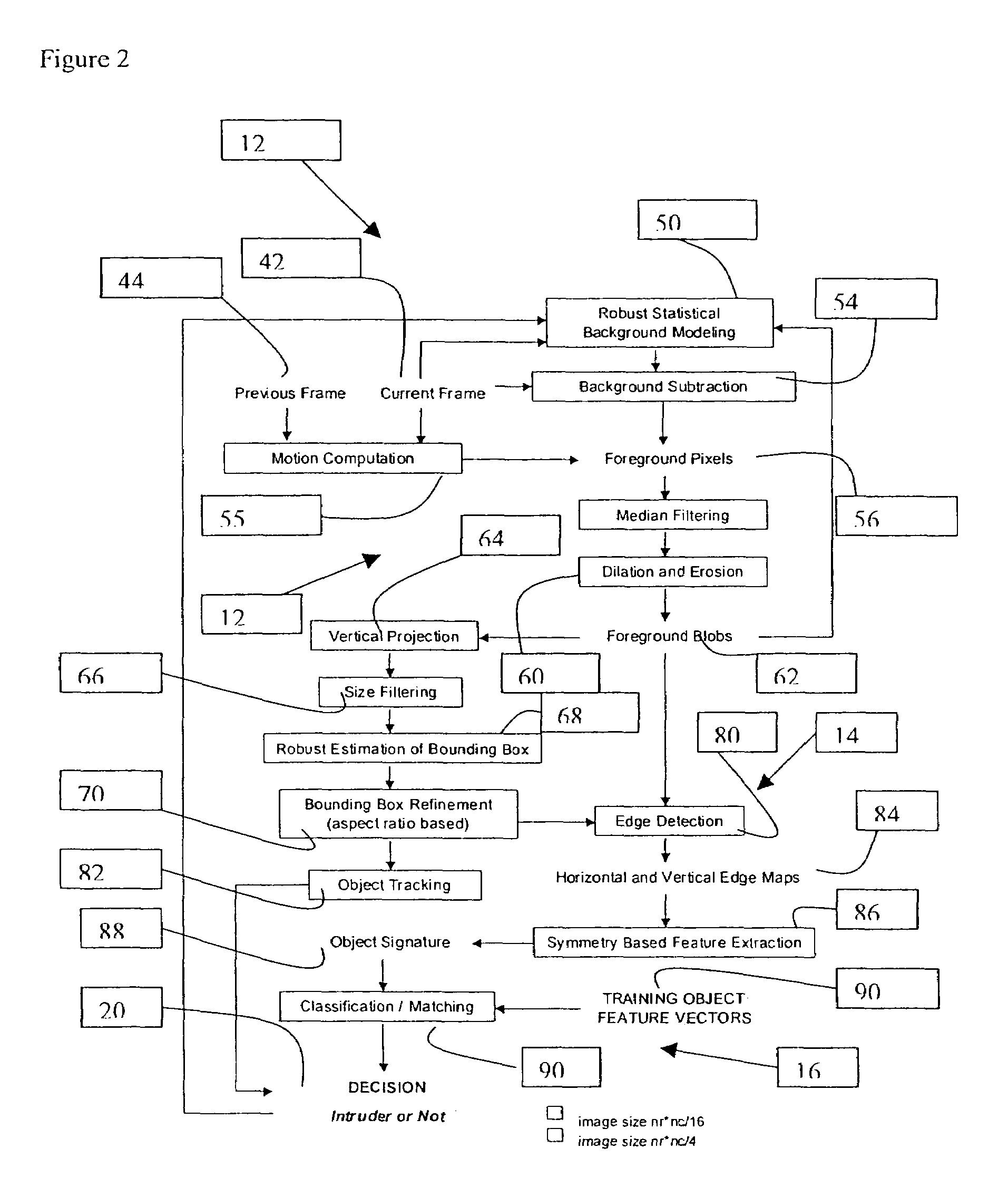Application-specific object-based segmentation and recognition system
a recognition system and object-based technology, applied in the field of application-specific object-based segmentation and recognition system, can solve the problems of reducing compression ratio, high false alarm rate, and user not knowing if the alarm is a true false alarm
- Summary
- Abstract
- Description
- Claims
- Application Information
AI Technical Summary
Benefits of technology
Problems solved by technology
Method used
Image
Examples
Embodiment Construction
[0037]The present invention relates to an application-specific object-based segmentation and recognition technology. The present invention is designed for a number of applications, including the presently preferred embodiment disclosed herein, i.e., a home / business video-based security and monitoring market. A high-level block diagram of an embodiment of the present invention is shown in FIG. 1. This embodiment of the present invention can combine object segmentation, e.g., for the MPEG-4 video compression standard, specialized recognition algorithms, e.g., for detecting objects of interest, e.g., an intruder in the video scene, moving at least sometimes, through portions of the video scene, which can operate on the segmented objects. The output of the system can be stored, e.g., in a video database / server for use, e.g., for notifying users when suspicious activity has been detected to have occurred and supplying the user, e.g., with streaming video of the activity. The objects in t...
PUM
 Login to View More
Login to View More Abstract
Description
Claims
Application Information
 Login to View More
Login to View More - R&D
- Intellectual Property
- Life Sciences
- Materials
- Tech Scout
- Unparalleled Data Quality
- Higher Quality Content
- 60% Fewer Hallucinations
Browse by: Latest US Patents, China's latest patents, Technical Efficacy Thesaurus, Application Domain, Technology Topic, Popular Technical Reports.
© 2025 PatSnap. All rights reserved.Legal|Privacy policy|Modern Slavery Act Transparency Statement|Sitemap|About US| Contact US: help@patsnap.com



